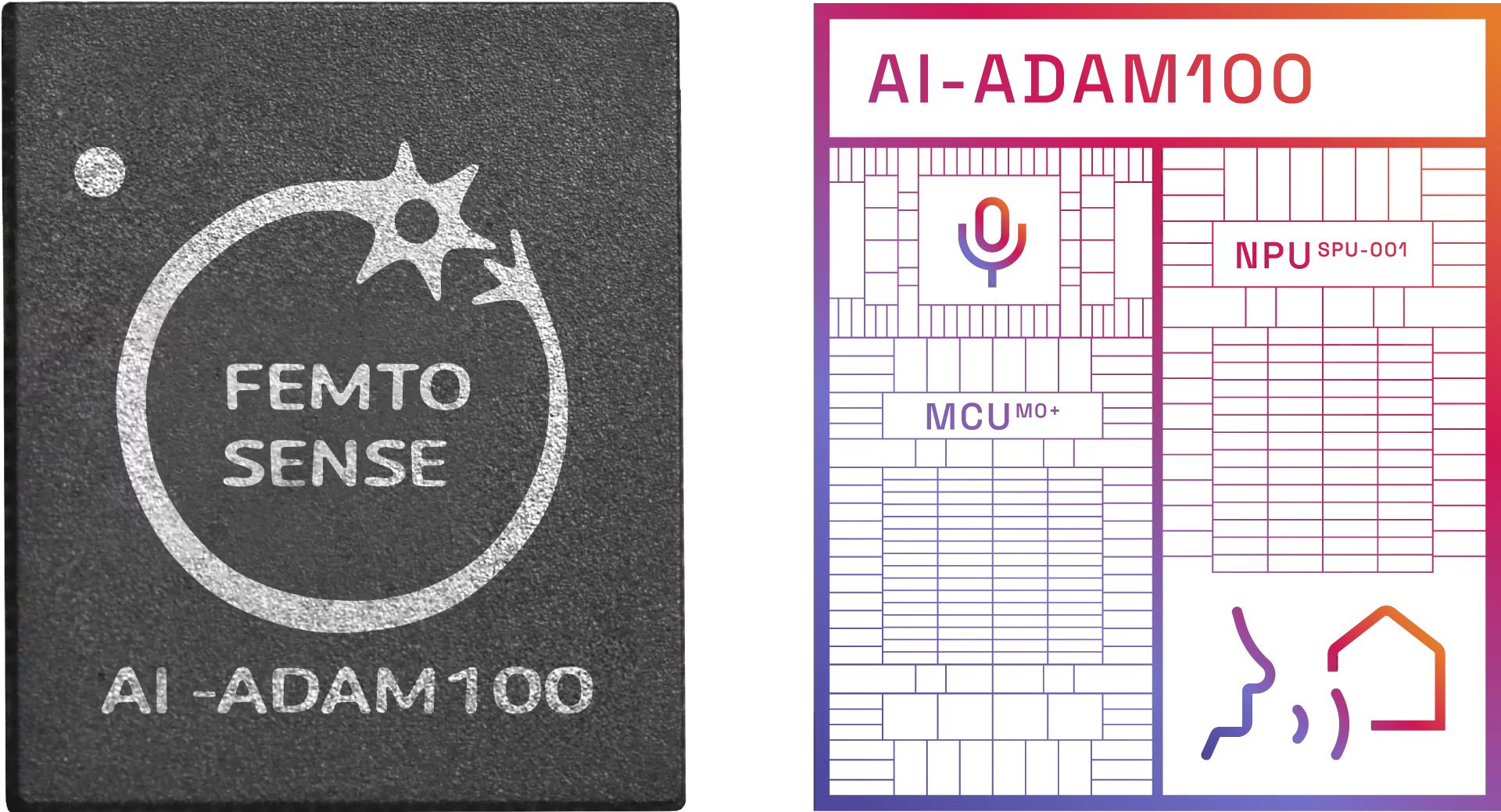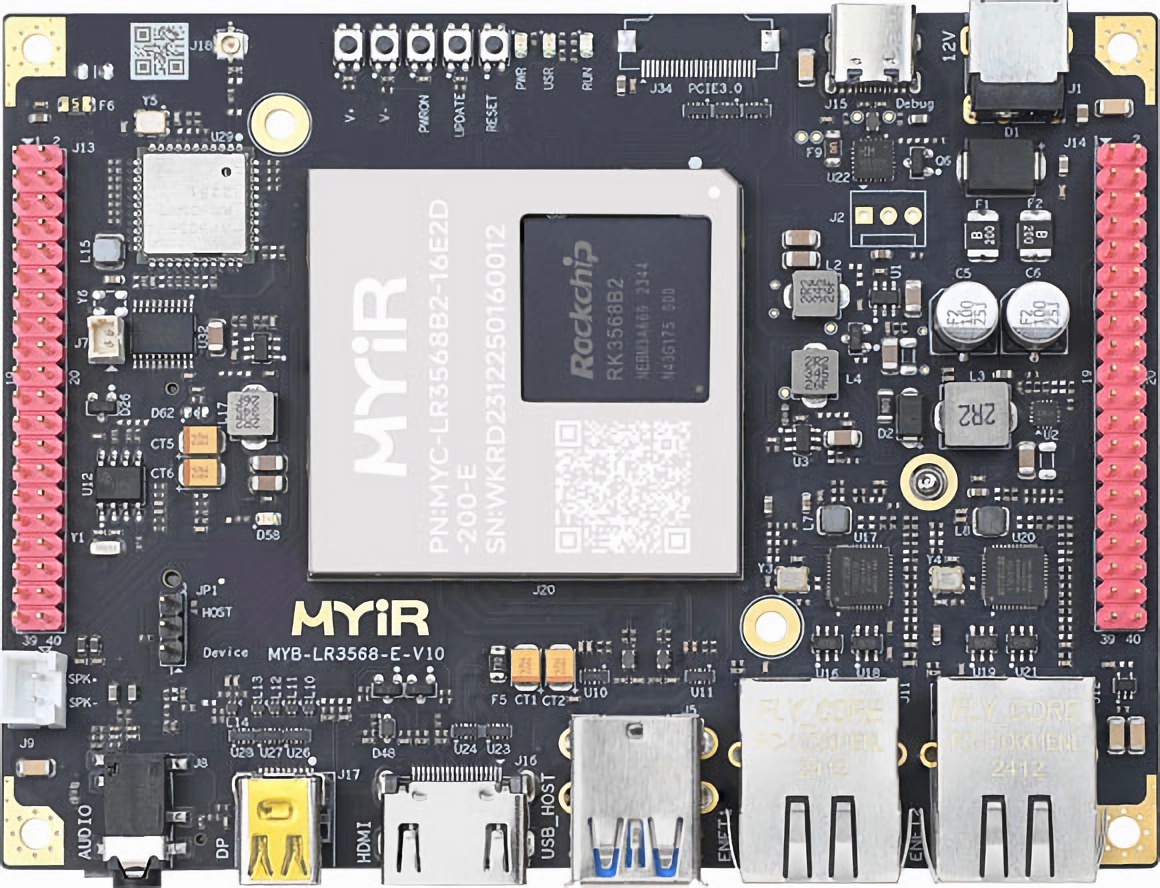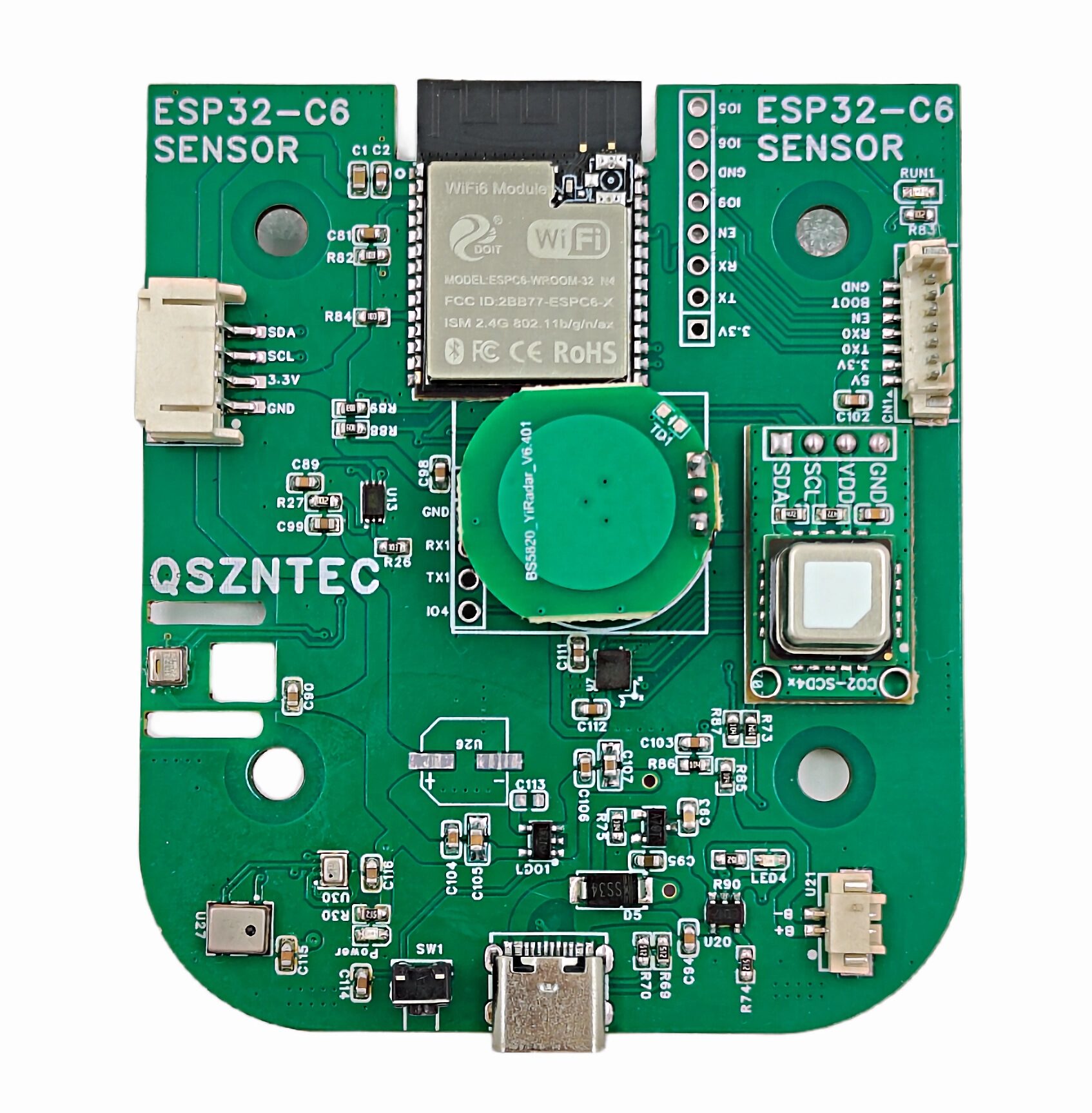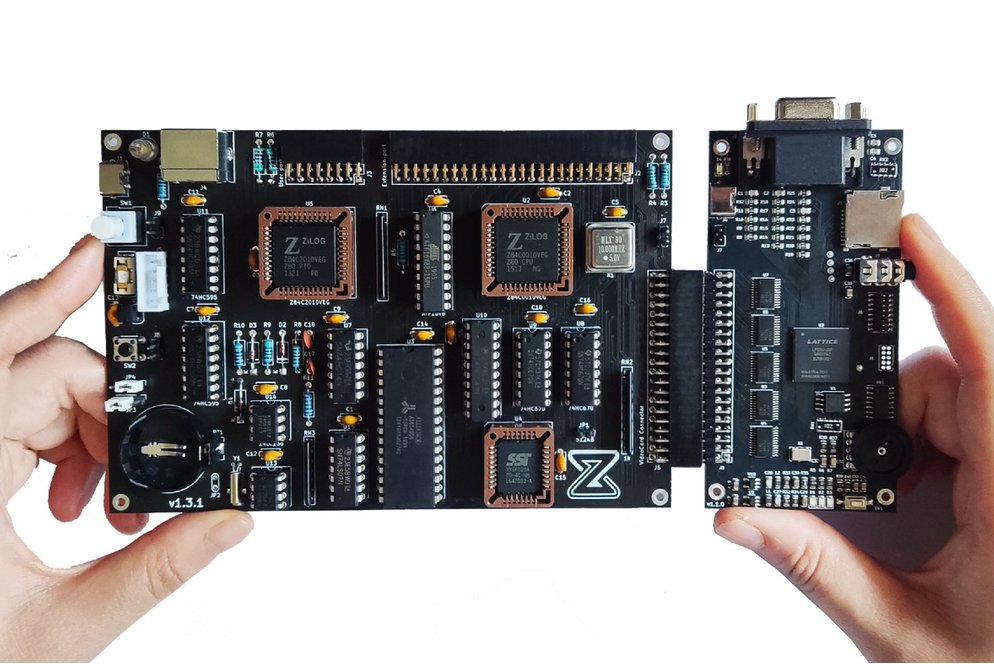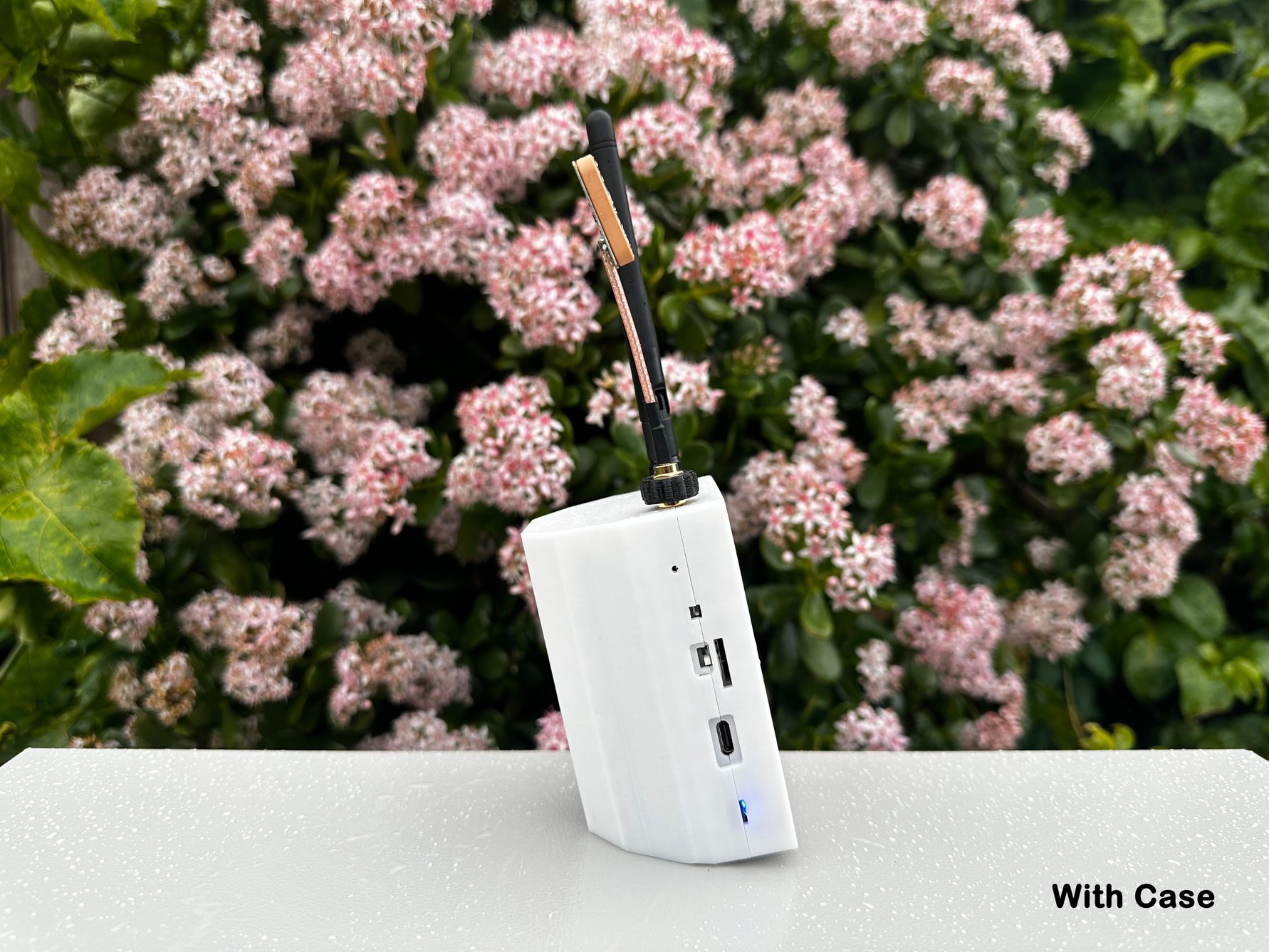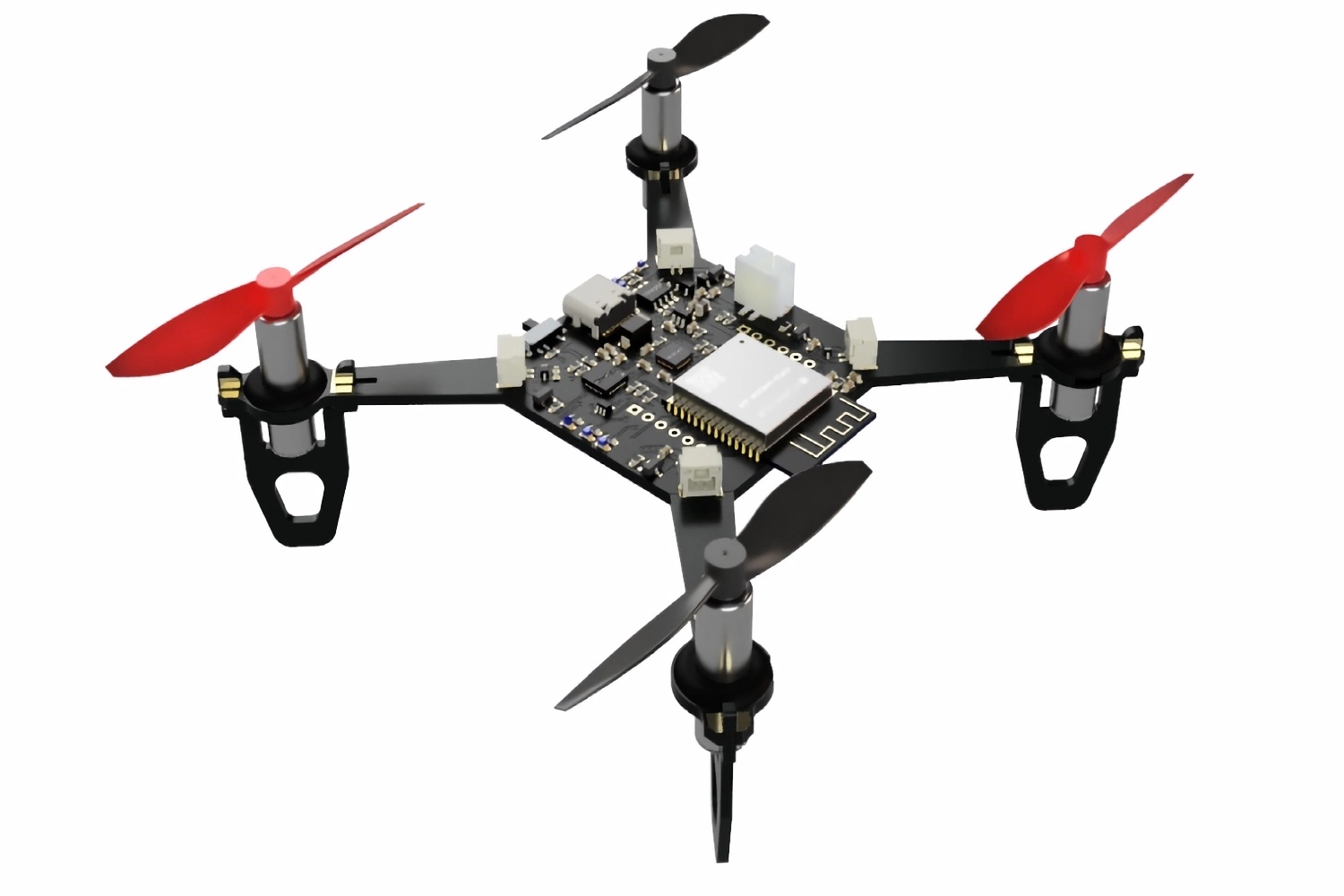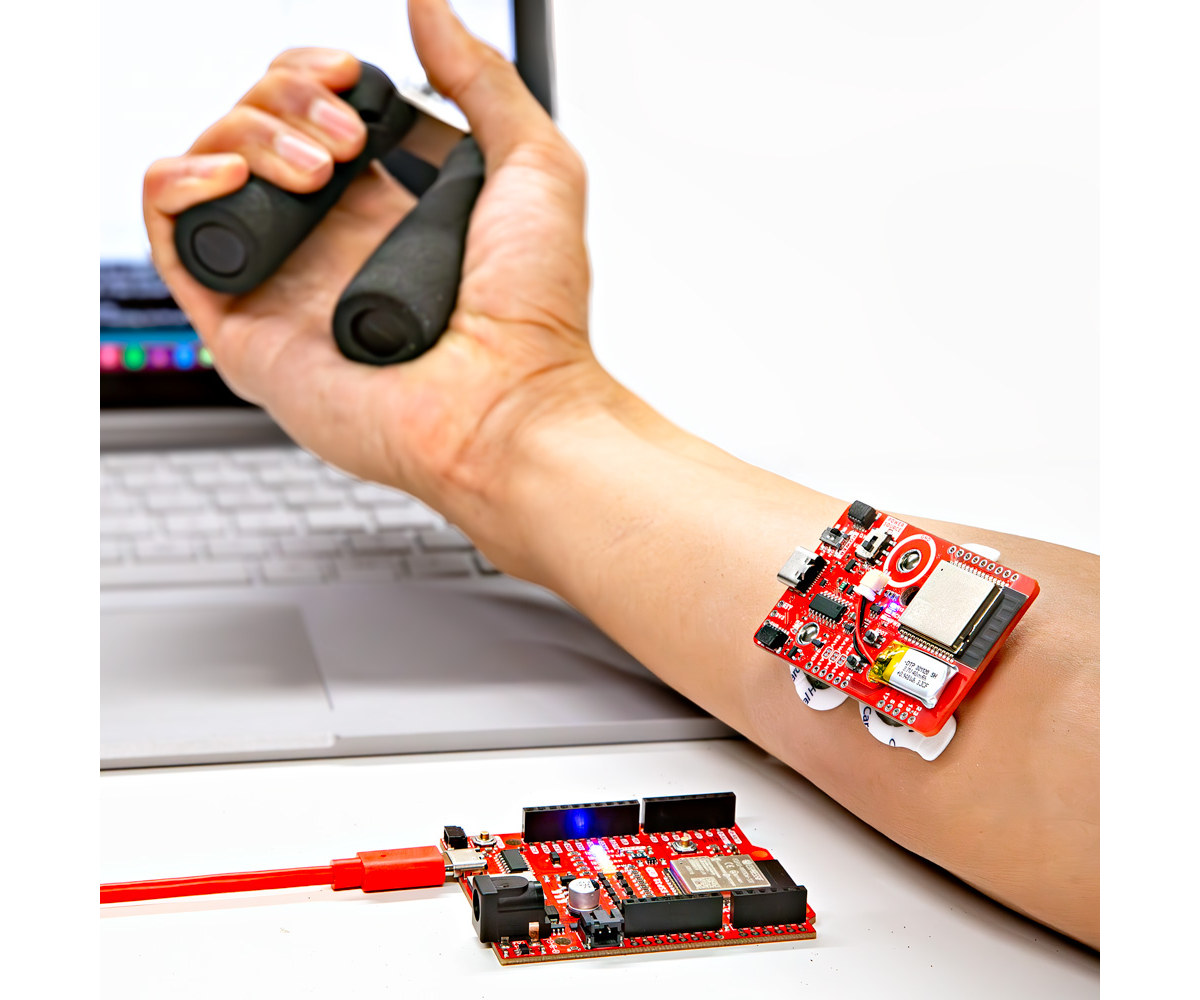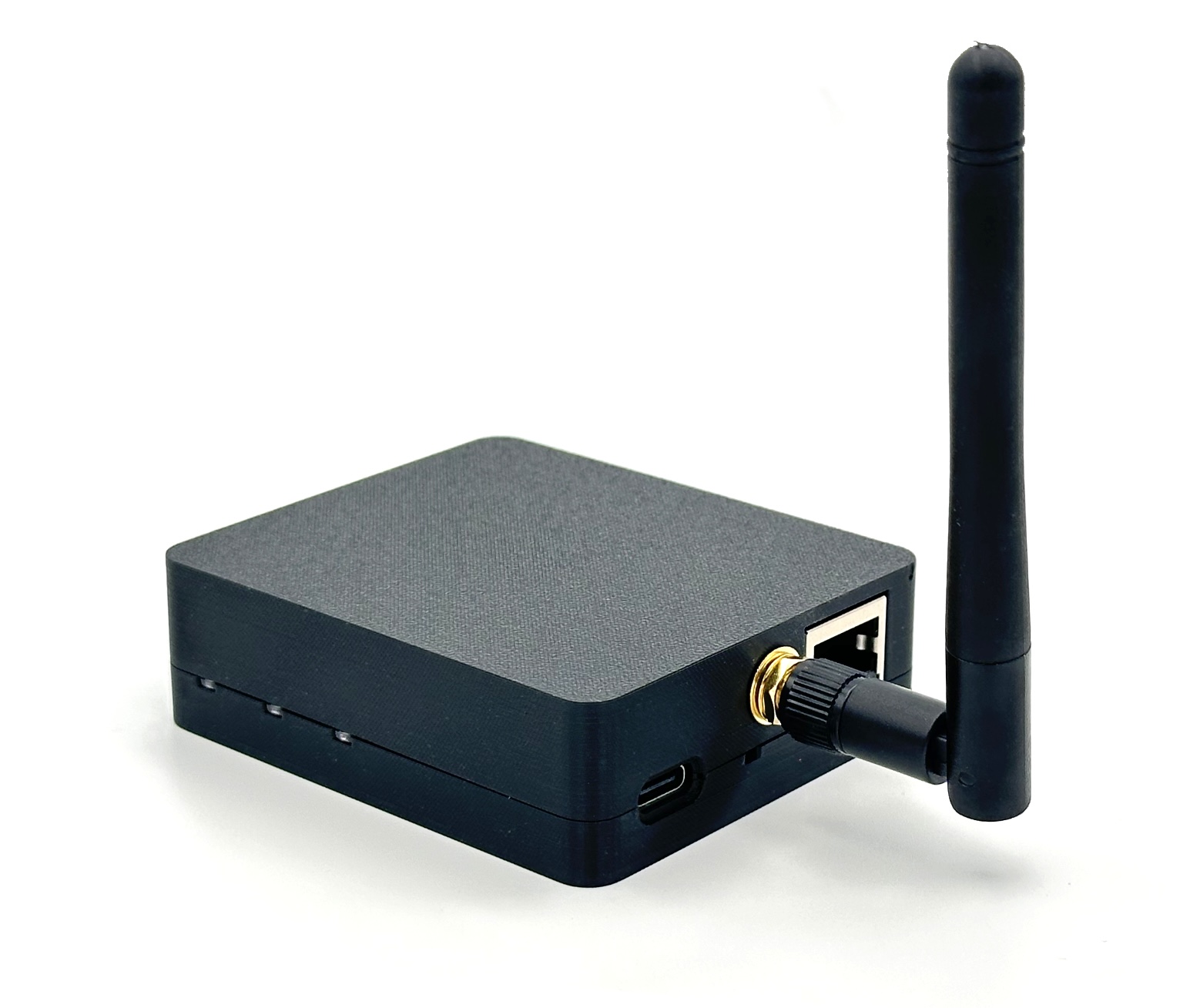Femtosense’s newest release, the AI-ADAM-100, combines a low-power Arm Cortex M0+ microcontroller from ABOV Semiconductor with the Femtosense Sparse Processing Unit (SPU), an in-house neural processing unit. This combination powers AI voice processing and cleanup capabilities on edge devices. It leverages sparsity techniques to ensure that models can run on edge devices without intensive processing. Sparsity in AI refers to the presence of zeroes or non-zero values in the matrices and tensors used in machine learning models. No computation is required for these zero weights, heavily reducing processing requirements. The Femtosense AI-ADAM-100 aims to bring voice control to various devices such as home appliances, hearing aids, industrial headsets, and consumer earbuds. These appliances can implement voice user interfaces that allow users to talk naturally in their own words. On-device voice cleanup functionality would reduce infrastructure costs and improve the accuracy of the data sent to the cloud. The Femtosense SiP […]
RK3568-based MYC-LR3568 system-on-module comes with up to 8GB RAM, 32GB storage for cost-sensitive Edge AI applications
MYIR Tech has announced the release of the Rockchip RK3568-based MYC-LR3568 Edge AI system-on-module (SoM) offered in a compact 381-pin expansion LGA package design. It features up to 8GB LPDDR4 RAM, 32GB eMMC flash storage, a power management integrated circuit, and various connectivity options. The base configuration of the MYC-LR3568 system-on-module offers only 2GB RAM and 16GB storage but the module supports up to 8GB RAM and 32GB eMMC storage. It supports several video codecs, including 4K 60fps H.265/H.264/VP9 decoding and 1080P 60fps H.265/H.264 encoding, for high-quality video playback and recording. The MYC-LR3568 SoM works with Debian and Linux operating systems. It is designed for cost-sensitive industrial applications including but not limited to IoT gateways, NVR storage, industrial control, human-machine interface (HMI), cloud terminals, and facial recognition systems. MYIR Tech’s MYC-LR3568 specifications: SoC – Rockchip RK3568 (B2 or J variant) CPU RK3568B2 – Quad-core processor with four Cortex-A55 cores @ 2.0 […]
Qsen-07 multi-sensor wireless board can detect CO2, VOC, temperature, humidity, ambient light, and attitude
The Qsen-07 multi-sensor board is an ESP32 wireless development board that combines several useful sensors into one device, making it easier to control, monitor, and enhance your home environment. It is a recent product from Maker Go, a China-based hardware company, which claims the board is “fully integrated with ESPHome and Home Assistant“. But as noted in a reader’s comment below, ESPHome on ESP32-C6 is still a work in progress, and the YAML configuration file for the board has yet to be provided by the company. The Qsen-07 multi-sensor board is “designed for health-conscious and tech-savvy homeowners” and can monitor air quality and other environmental variables to ensure a safe and smart living space. It features up to seven sensors, including two air quality sensors, a temperature and humidity sensor, an ambient light sensor, a barometric pressure sensor, an attitude gyro sensor, and an optional radar sensor. The Aosong AGS10 […]
$180 Zeal 8-bit Computer Complete Edition is an all-in-one retrocomputing platform based on the Zilog Z80 microprocessor
The Zeal 8-bit Computer Complete Edition is a system that aims to bring retrocomputing to the modern age with the aid of a motherboard built around the Zilog Z80 microprocessor and several peripherals. The Zeal 8-bit Computer project began in early 2021 and has been released in bits and pieces since then. Now, a finalized version tagged the “Complete Edition” is ready for release to the public. It promises a modern retrocomputing experience with the simplicity of retro computers and support for relatively recent features such as VGA graphics, TF cards, and NOR flash. The Zeal 8-bit Computer Complete Edition includes the following components: the Zeal 8-bit Computer motherboard, the Zeal 8-bit Video Board, and a 3D-printed enclosure with a touch sensor for turning the board on/off. The Zeal 8-bit Video Board is based on a Lattice ECP5 FPGA and can output up to 65,536 colors via VGA. It also […]
The ESP32 Marauder Pocket Unit v2 is a wireless penetration device with an onboard GPS module and touchscreen
The ESP32 Marauder Pocket Unit with GPS v2 is a portable Wi-Fi and Bluetooth penetration tool powered by an ESP32 module and used to test and analyze wireless networks. It features a 2.8-inch touchscreen, two 18650 batteries, an SD card slot, an LED battery indicator, and two external antennas for 2.4GHz Wi-Fi and GPS. ESP32 Marauder Pocket Unit v2 specifications: Microcontroller – ESP32 Wi-Fi & Bluetooth SoC Storage – MicroSD card slot for file sharing, backup, and firmware updates (8GB SanDisk memory card included) Display – 2.8-inch capacitive touchscreen USB – USB-C port for charging GNSS – Embedded GPS module Antenna – External dual antenna SMA connectors for WIFI and GPS Misc 1x battery status indicator Reset and Power buttons Power – 2x 18650 batteries Dimensions – 92 x 71 x 46mm The ESP32 Marauder device is based on JustCallMeKoko’s ESP32Marauder Project, a suite of Wi-Fi/Bluetooth offensive and defensive tools […]
SkyByte Mini Wi-Fi-controlled drone runs the open-source ESP32-Drone firmware (Crowdfunding)
The SkyByte Mini is a simple, miniature drone powered by the ESP32-WROOM-32 WiFi and Bluetooth module, and comprised of an MPU6050 inertial measurement unit, coreless motors, and plastic propellers. The Espressif ESP32-WROOM-32 module on the board provides a wireless connection that can be used to control the drone from a mobile app. The printed circuit board uses an “all-in-one” design that removes the need for 3D-printed parts and makes for a more compact final product. The drone’s functionality can be extended with external sensors to suit desired applications. It can be used for hobbyist and educational purposes. SkyByte Mini drone specifications: Wireless Module – ESP32-WROOM-32 module, dual-core Tensilica processor, with integrated Wi-Fi + Bluetooth 4.2 LE Motor control – 4x SI2302 N-Channel 20V MOSFET USB – USB-C port for power and programming Sensor – TDK Invensense MPU6050 IMU 3-axis gyroscope and 3-axis accelerometer Misc- 3x debugging LEDs, 1x power LED, […]
MyoWare 2.0 Muscle Sensor Wireless Kit targets electromyography (EMG) applications
The MyoWare 2.0 Muscle Sensor Wireless Kit is an Arduino-compatible electromyography (EMG) sensor kit capable of detecting and measuring the electrical signals generated by muscle fibers in the body. The MyoWare 2.0 kit is a collaborative product by SparkFun and Advancer Technologies. The MyoWare 2.0 ecosystem brings several improvements over the previous generation, including a compact design, solderless snap connectors, and an upgraded chipset for improved reliability and performance. It includes shields designed to seamlessly interface with the MyoWare 2.0 Muscle sensor, a wearable, Arduino-compatible EMG sensor. The Muscle Sensor’s wearable design makes it possible to directly attach biomedical sensor pads and add-on shields to the board. It operates on a single-supply voltage between +3.3V to +5V and supports three separate output modes. It analyzes filtered and rectified activity from muscle movement and outputs a signal from 0 to the power source voltage (VIN) that represents the intensity of flex. […]
Zigbee Coordinator CC2652P7 1.0 runs open-source firmware, works with Zigbee2MQTT, Home Assistant, and ioBroker
The cod.m Zigbee Coordinator 1.0 (CZC 1.0) is a hybrid ZigBee coordinator that can be used to connect devices over a network (Ethernet/Wi-Fi) and USB. The ZigBee Coordinator version 1.0 is an upgrade of version 0.2 released in 2022. The CZC 1.0 replaces the Texas Instruments CC2652P2 chip with the much more powerful CC2652P7 chip, uses an ESP32-WROOM-32E module instead of the USR-K6 chip, and adds compatibility with Home Assistant (ZHA integration). It can create a Zigbee network and pair Zigbee devices over Ethernet, WiFi, or Serial (USB). It features the same Texas Instruments CC2652P7 chip as the SMLIGHT line of Zigbee Ethernet/WiFi/USB coordinators and USB dongles. There are two models of the CZC 1.0: a Power over Ethernet model and a model that can only be powered via USB-C. cod.m Zigbee Coordinator specifications: Zigbee SoC – Texas Instruments CC2652P7 Arm Cortex-M4F microcontroller @ 48 MHz with 704 KB flash, […]


